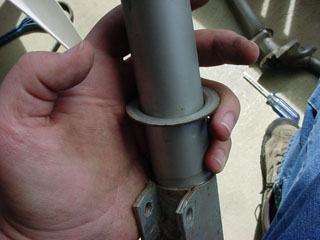
|
|
The bottom flared metal piece holds the spring. Unfortunately, once the damper unit dies, it's not rebuildable
like on older Vespas, so you kind of have to replace the shock once it leaks. Kind of a shame, really, but I can't
say enough good about the Sebacs I went with as replacements.
|